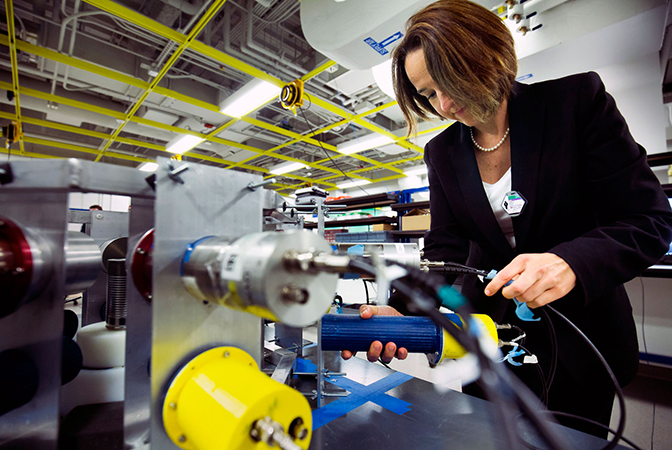
Iran’s centrifuges and nuclear nonproliferation: A Q&A with Sara Pozzi
Understanding nuclear enrichment and what it means for the “Iran nuclear deal.”

Understanding nuclear enrichment and what it means for the “Iran nuclear deal.”

Iran recently brought more advanced centrifuges into service, in violation of the 2015 Joint Comprehensive Plan of Action, or “Iran nuclear deal.” The Michigan Engineer asked Sara Pozzi, a professor of nuclear engineering and radiological science and director of two $25M nuclear nonproliferation university consortia, about what this means for nuclear nonproliferation.
The natural uranium that we dig out of the ground is a mixture of uranium isotopes, or versions of the uranium atom with different properties. The isotope that can split and release energy, which humans have used for both nuclear power and nuclear weapons, is uranium-235. It is relatively rare, less than one percent of natural uranium. The rest is mostly uranium-238, a slightly heavier atom that doesn’t split easily.
Uranium enrichment increases the proportion of uranium-235, enabling the chain reactions that keep reactors running or cause nuclear bombs to explode. Nuclear fuel rods use uranium that is between three and five percent uranium-235, so the nuclear deal limited Iran to four percent enrichment. Nuclear weapons, on the other hand, are made from uranium that is more than 90 percent uranium-235.
A centrifuge is essentially a cylinder that spins, causing a fluid inside it to spin as well. This separates different components of a material that have different masses. Uranium is combined with fluorine to make a gas for centrifuge enrichment.
As the uranium gas swirls around, the heavier uranium-238 goes towards the periphery of the centrifuge while the lighter uranium-235 goes towards the center. The gas extracted from the center contains a (slightly) higher proportion of uranium-235 than the starting gas. This enriched gas is fed into a centrifuge again, and the process repeats until the proportion of uranium-235 is sufficiently high.
Iran’s use of advanced centrifuges is limited by the treaty because these more efficient devices could produce weapons-grade uranium more quickly. This is a problem because the nuclear deal is designed so that Iran shouldn’t be able to produce a weapon within a year of starting a weapons program, and uranium enrichment is one of the bottlenecks the treaty relies on. Inspectors need time to discover a secret weapons program, or activities in violation of treaty obligations, and world leaders need time to agree on a response.
Iran says that it will come back into compliance with the deal as soon as the United States drops economic sanctions, which the Trump administration began within a few months of pulling the U.S. out of the deal in May, 2018. However, this is not Iran’s first violation of the deal. It had previously been running more advanced centrifuges than allowed.
Iran has also reportedly refused access to military sites for inspectors from the International Atomic Energy Agency, the body that performs inspections to ensure that the signers of the Nuclear Nonproliferation Treaty adhere to its rules.
As an advocate for nuclear nonproliferation, I hope that the deal succeeds. But it will work only if it is respected by all parties.
Pozzi leads the Consortium for Monitoring, Technology and Verification and the Consortium for Verification Technology, two coordinated efforts to improve nuclear nonproliferation technology and build the nonproliferation workforce. These consortia bring together expertise from universities and national laboratories around the country.